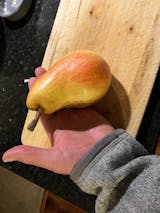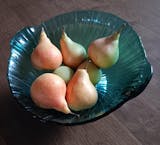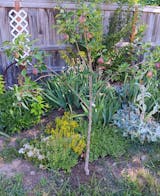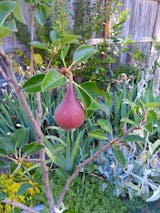Rescue European Pear
Pyrus communis 'Rescue'
A show stopper. Everyone who sees and tastes this huge, beautiful fruit insists on buying a tree. The fruit is yellow with a bright red-orange blush and the flesh is sweet, smooth and juicy. The original tree was rescued from developer demolition by an attentive neighbor when the original farmer's property transferred hands.
The scab-resistant tree is upright and vigorous and each year loaded with fruit. The fruit matures in September and keeps until December in cold storage. Its small core makes it easy to can. Needs a pollenizer.
USDA Zone: 4-9
Grow Height: 15' (Semi Dwarf)
Sun: Full Sun
Ripening Time: September
Pollination: Needs a Pollinizer
Semi-Dwarf Rootstock: OHxF87
Read our Pear Growing Guide







